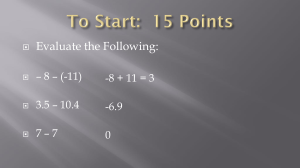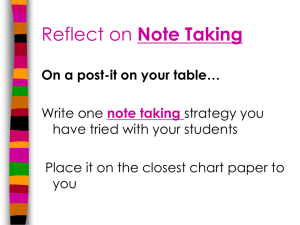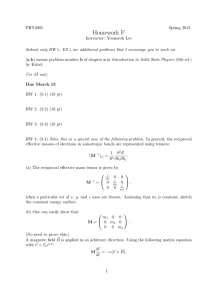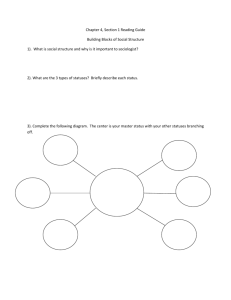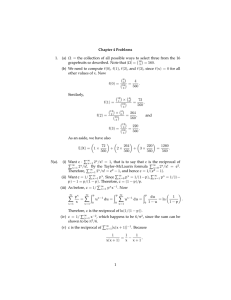Classroom Instruction That Works Robert Marzano, Debra Pickering, and Jane Pollock
advertisement
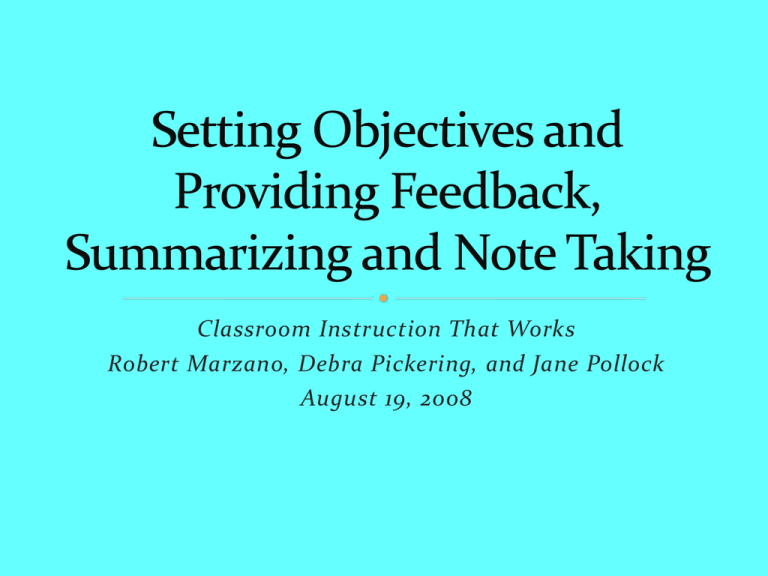
Classroom Instruction That Works Robert Marzano, Debra Pickering, and Jane Pollock August 19, 2008 1. Students should be allowed to set personal learning goals and not be restricted by learning objectives that are too specific. 2. Feedback that is norm-referenced is better than criterion –referenced. 3. Feedback on student performance should be timely, specific, and corrective. 4. Corrective feedback focuses only on what a student has done well with an assignment or task. 5. A summary frame is a series of questions that the teacher provides to the student to highlight specific information. 6. TRI refers to Topic, Restriction, Illustrations. 7. Reciprocal teaching involves only 3 components summarizing, clarifying, and predicting. 8. The more notes that a student takes, the better. 9. The rule-based strategy for summarizing consists of 4 steps. 10. Students grading each other’s work is considered peer feedback. Instructional goals narrow what students focus on Instructional goals should not be too specific Students should be encouraged to personalize the teacher’s goals. Students should have flexibility (differentiation) Give an example of an instructional goal from your standard course of study that is not too specific. Place in student friendly terms. Next personalize this goal. Finally add some flexibility, what if this student had already mastered part or all of this goal? Feedback Think of a time you had a positive experience with feedback and a time you had a negative experience with feedback. What contributed to the positive and negative feelings. Criterion -referenced is superior to norm-referenced feedback. In other words providing feedback in terms of specific levels of knowledge and skill is better than simply providing students with a percentage score. What are some examples of ways to do this? Rubrics are helpful for providing criterion-referenced feedback Corrective Feedback- Provides information on what is being done that is correct and what is being done that is incorrect. This involves an actual explanation of what is right and what is wrong, rather than just a grade or check mark. Timely Feedback- The more delay in giving feedback, the less improvement there is in achievement. Specific to Criterion- Feedback should reference a specific skill and allow students to know how they are performing in regards to a learning target. (Think about the feedback you give for CFA and PA data) How can you make sure that students are sure which objectives they have or haven’t mastered? Summary Frames are helpful in providing a set series of questions to assist with summarizing different types of text. Examples: Narrative Frame (Fiction), TRI or Topic, Restrictions-Illustrations (Expository), Definition Frame (Describe Particular Concept) With your table group look at the passage on your table, use your Summary Frame questions to create a summary. Discuss how you could use this summary frame in your classroom. Compare your groups’ summary to another, look for similarities and differences Reciprocal Teaching involves four components. They include summarizing, questioning, clarifying, and predicting. Reciprocal Teaching is considered a strategy that provides for a deep level of understanding necessary for an effective summary. Review the sample lesson steps for facilitating a reciprocal teaching lesson… Discuss why it is important to model and teach each role before allowing students to lead the conversation Discuss what other roles you could include in the reciprocal teaching model Discuss what type of texts or subject area would reciprocal teaching work well A popular myth is that “less is more” when it comes to note taking. In reality students should be encouraged to take as many notes as possible about IMPORTANT INFORMATION Notes should be considered a work in progress Notes should be used as study guides Verbatim note taking is the least effective way to take notes, students should be offered a variety of choices (Outline, Combination Notes, Webbing…) There are 4 steps to the “Rule-Based Strategy” Delete trivial material 2. Delete redundant material 3. Substitute for lists 4. Select a topic sentence, or invent one 1. (Remember PLC’s activity last year, this is harder than it sounds) Peer feedback does not mean students grade each others work The goal is for students to clarify for each other what was correct or incorrect in an assessment Very underused Self reflection and self assessment through the use of rubrics may also be considered corrective feedback Look at the student work samples on your table Can you identify the learning target of the sample? What feedback would you provide the student? Was the strategy of summarizing and note taking used? If so, how? Self Assess your performance on the true/false assessment and the information presented. On post it record one area that is Clear& Sunny and one area that is still Partly Cloudy Post on chart to provide feedback for me!

